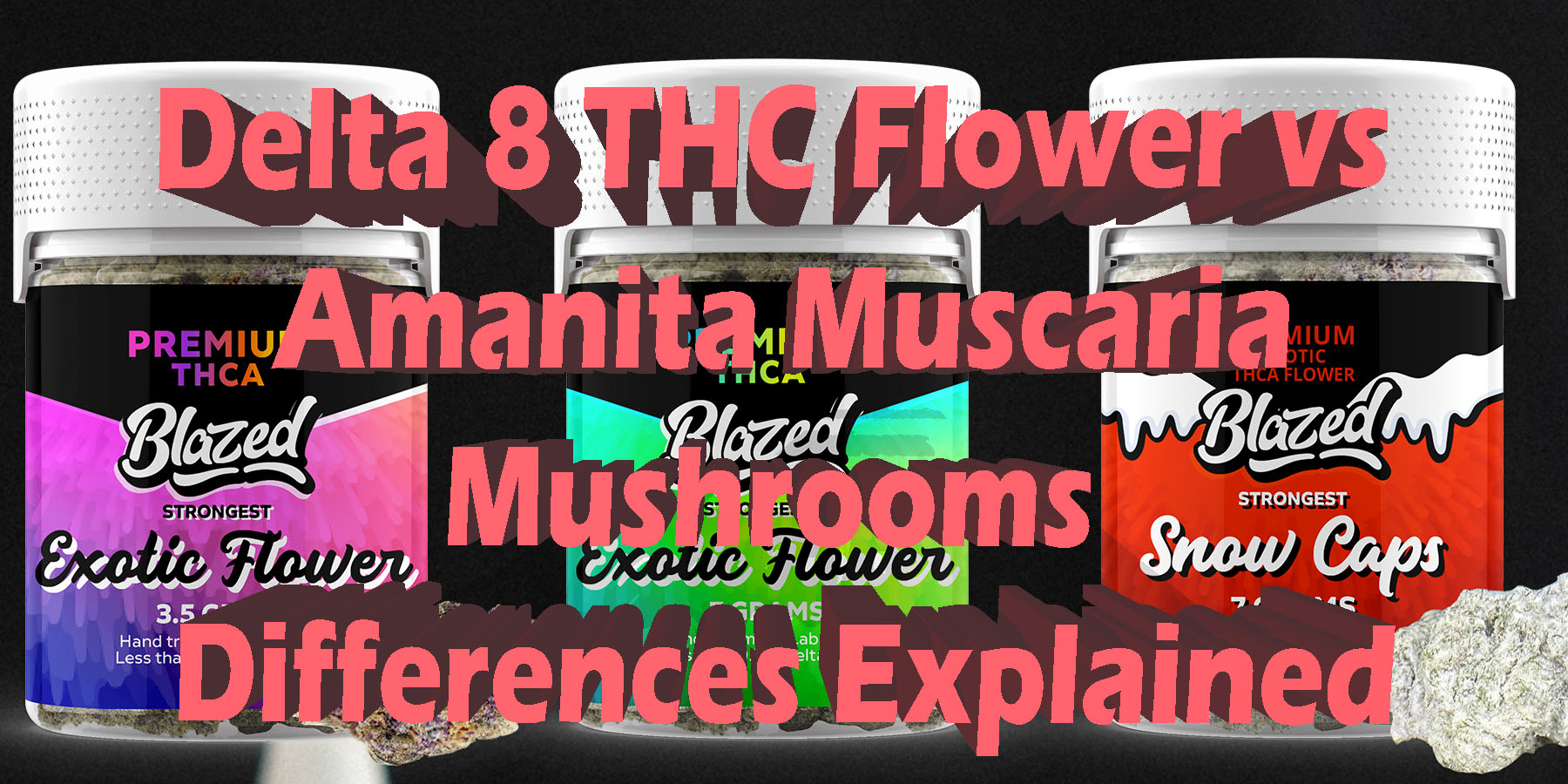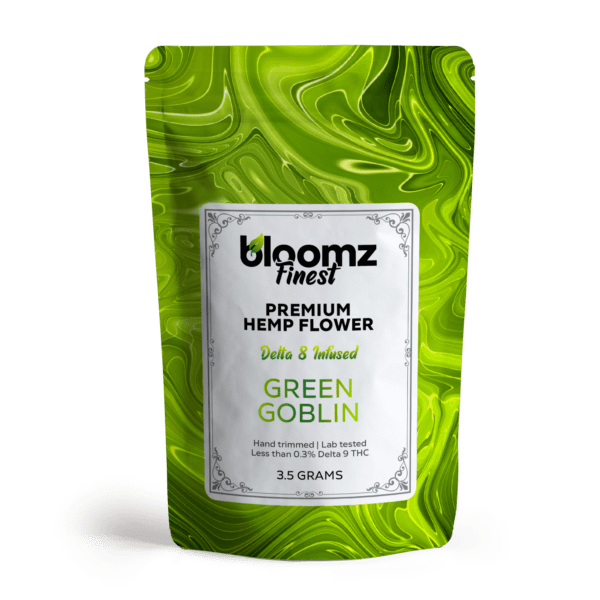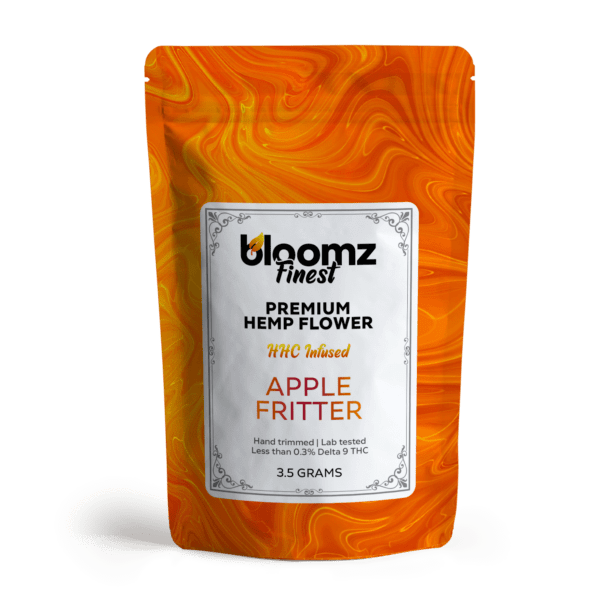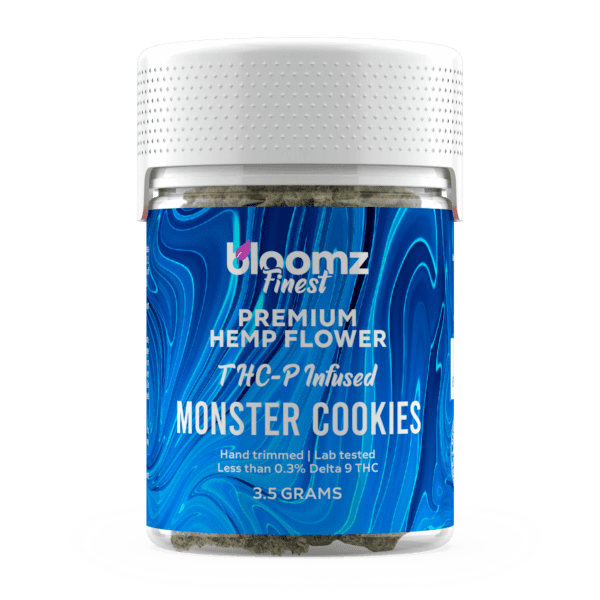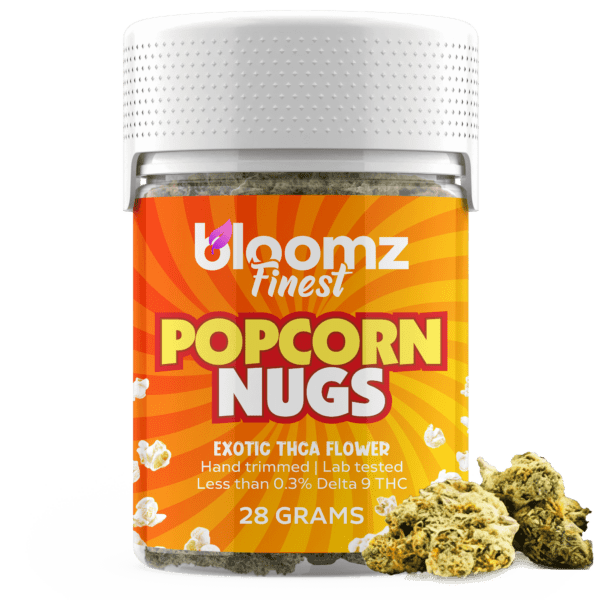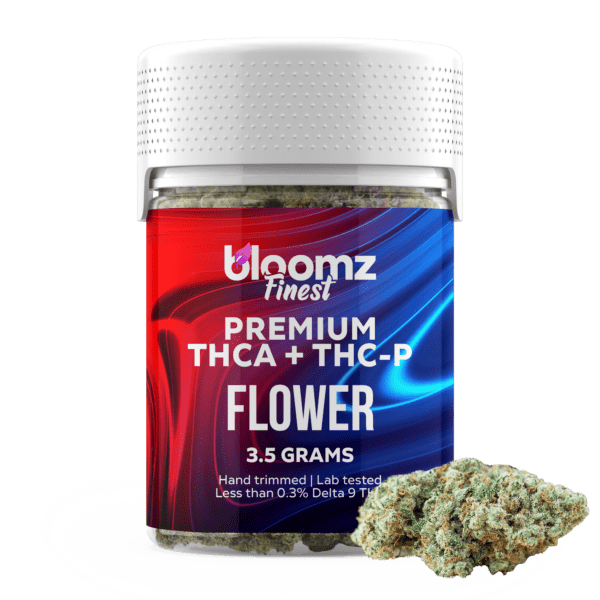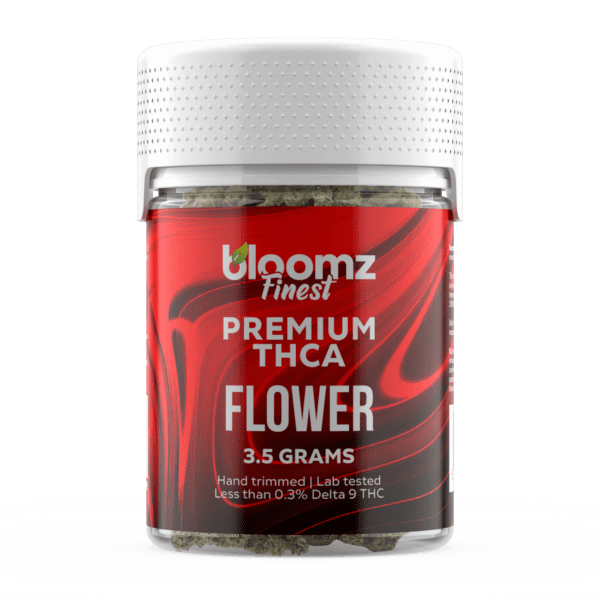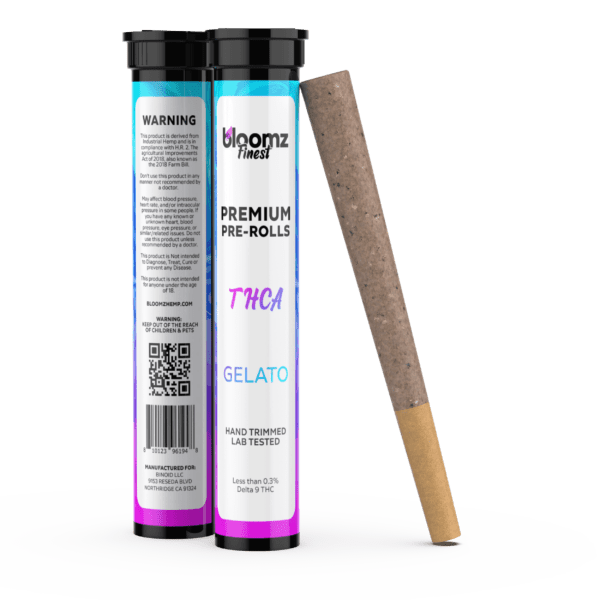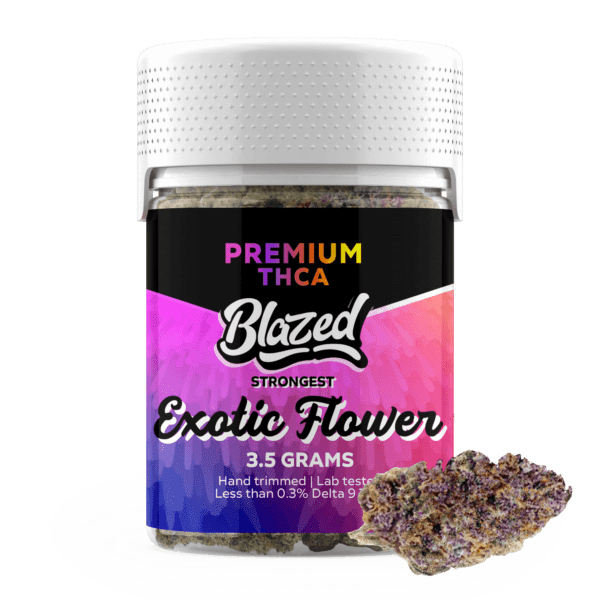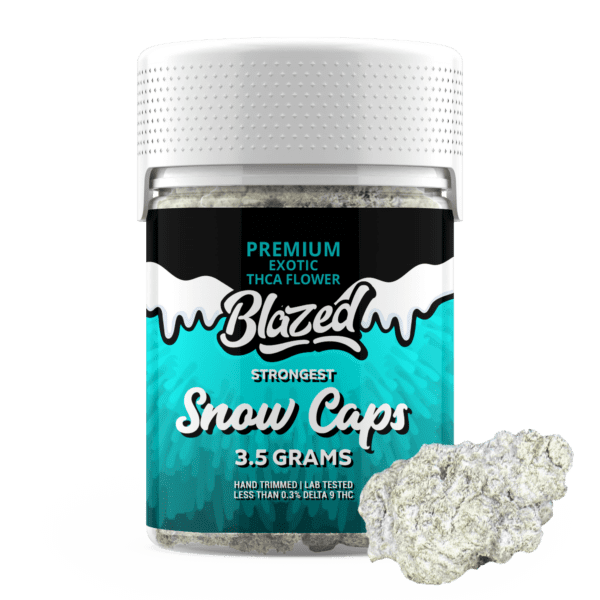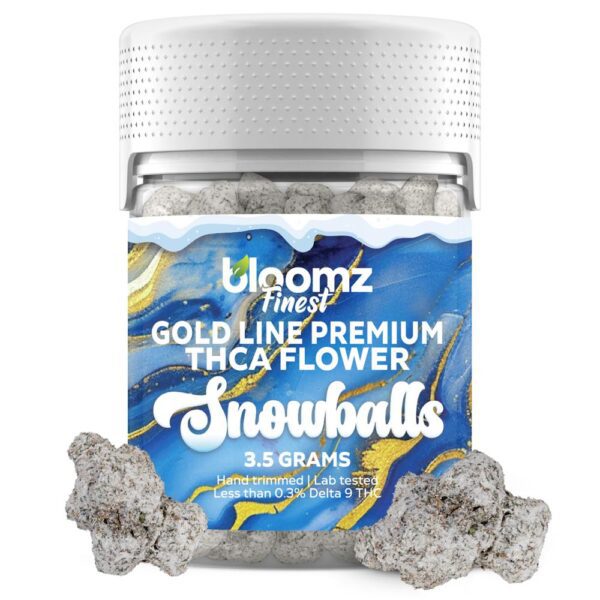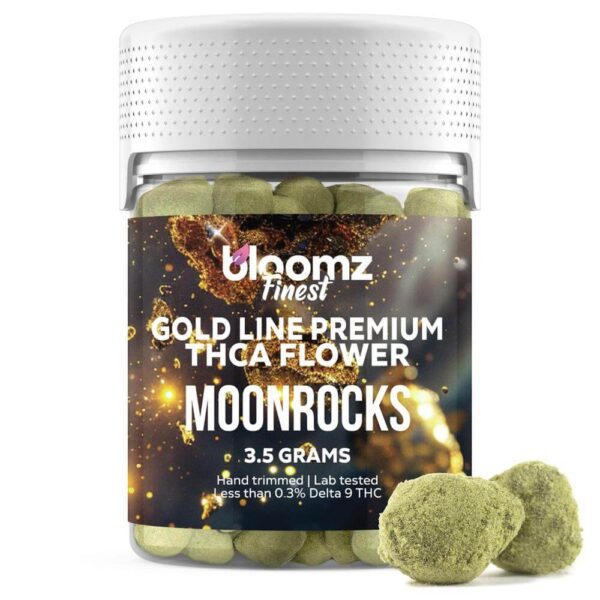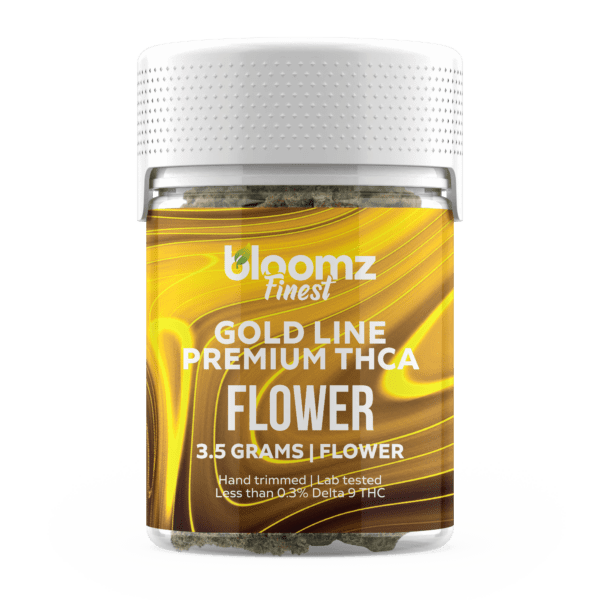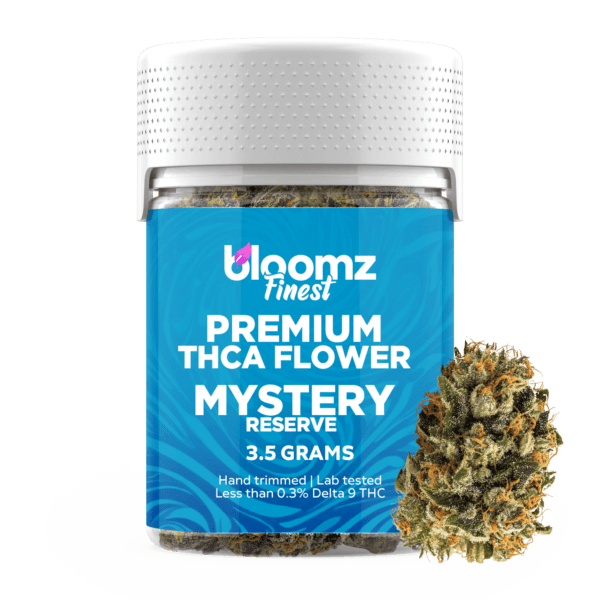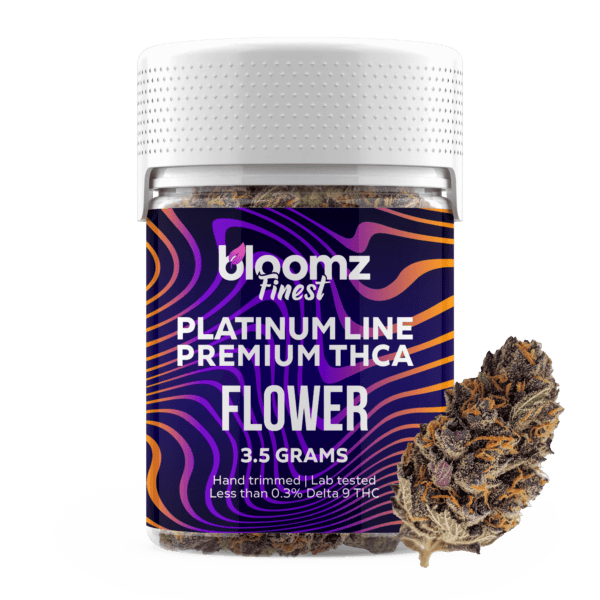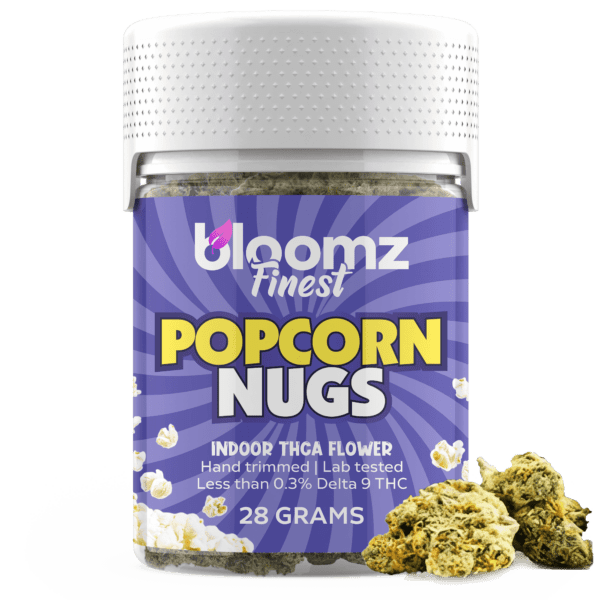The vast emporium of natural wonders has always offered humanity a diverse catalog of experiences, from the nourishing to the profound. In our modern age, this catalog has expanded, merging ancient botanical traditions with cutting-edge scientific innovation to create a fascinating and sometimes bewildering marketplace of new possibilities. Two particularly compelling products have emerged from wildly different origins to capture the public imagination, each offering a distinct key to a different door of perception. On one hand, we have Delta 8 THC Flower, a product of human ingenuity, where the familiar form of hemp flower is enhanced with a unique cannabinoid born from laboratory refinement, promising a clear and gentle journey into euphoria.
On the other, the iconic Amanita Muscaria mushroom rises from the forest floor, a fungus steeped in millennia of folklore and shamanic mystery, beckoning with the promise of a dream-like, dissociative voyage. This is not merely a comparison of two products; it is an exploration of two fundamentally different pathways to an altered state—one forged in the precision of a lab, the other rooted in the wild, untamed magic of the earth.
TO BUY DELTA 8 THC FLOWER CLICK HERE
Recommended products
Why It’s Important to Breakdown the Matchup of Delta 8 THC Flower vs. Amanita Muscaria Mushrooms
In an era of unprecedented access to novel and alternative products, the need for clear, nuanced, and accurate information is absolutely paramount. The direct comparison of Delta 8 THC Flower and Amanita Muscaria mushrooms is a vital and illuminating exercise, serving to distinguish between two profoundly different substances that are often encountered in similar retail spaces, like online stores and smoke shops.
A thorough breakdown is essential to dismantle potential misconceptions, clarify the vast gulf in their chemical compositions and origins, and vividly illustrate the completely separate worlds of experience they offer. By carefully dissecting each contender, we empower individuals to move beyond surface-level curiosity and make choices that are truly aligned with their intentions, their comfort levels with different states of consciousness, and their understanding of the associated legal and safety landscapes.
The primary importance of this comparison lies in the fundamental difference in their pharmacology and resulting effects. Delta 8 THC flower provides an experience rooted in the familiar territory of cannabinoids. Delta 8 THC interacts with the body’s endocannabinoid system, producing effects often described as a milder, more clear-headed version of the classic cannabis high—a journey characterized by gentle euphoria and relaxing body sensations.
Amanita Muscaria, conversely, operates on an entirely different neurological stage. Its active compounds, muscimol and ibotenic acid, interact with GABA receptors in the brain, inducing a state closer to a vivid, looping, dissociative dream than anything resembling a cannabinoid high. Failing to grasp this distinction is not just a matter of preference; it’s the difference between anticipating a chilled-out afternoon and embarking on an introspective, reality-bending inner voyage that can be deeply disorienting if unexpected.
Furthermore, their origins and legal statuses are worlds apart, each with its own set of complexities. Delta 8 THC flower is a manufactured product; it is hemp flower coated with a cannabinoid that is typically converted from CBD in a lab. Its legality is derived from the 2018 Farm Bill but is highly contentious, with many states having banned it and federal agencies questioning its status.
Amanita Muscaria, on the other hand, is a naturally occurring fungus. It is federally legal in the United States (with a few state-level exceptions) simply because its active compounds are not listed on the Controlled Substances Act. However, it also carries inherent risks if sourced or prepared improperly due to the presence of the neurotoxic ibotenic acid. Understanding these legal nuances and safety considerations is paramount for any responsible consumer.
Finally, this detailed matchup honors the rich and separate histories of these two natural-adjacent wonders. The story of Delta 8 THC is a modern one, a tale of scientific discovery and legal interpretation within the vast and ancient tradition of cannabis. It represents the cutting edge of what is possible within the hemp industry. Amanita Muscaria’s history is far more ancient and mysterious, steeped in the lore of Siberian shamanism, theories about ancient Vedic rituals, and the very fabric of European fairy tales. Appreciating these distinct cultural legacies adds a layer of depth to the consumer experience, ensuring that curiosity is met with clarity and respect for the powerful sources—one a product of modern science, the other a relic of ancient magic—from which they originate.
Recommended products
Contender #1: Delta 8 THC Flower
Delta 8 THC flower has emerged as one of the most talked-about and innovative products in the modern hemp industry, representing a fascinating fusion of nature’s bounty and human scientific ingenuity. It offers a unique middle ground for those curious about the world of THC, providing a distinct experience that sets it apart from both traditional cannabis and non-intoxicating CBD flower. To the casual observer, a nug of Delta 8 THC flower looks and smells much like any other high-quality cannabis, boasting rich aromas and a crystalline sheen.
However, its true nature is more complex, as it is not a flower that grows naturally with high concentrations of Delta 8 THC. Instead, it is a meticulously crafted product, born from a multi-step process that begins with premium hemp and ends with a uniquely psychoactive final product. Its rise in popularity is a direct result of the 2018 Farm Bill, which created the legal space for hemp-derived cannabinoids and sparked a wave of innovation that brought Delta 8 THC to the forefront of the market.
At the heart of this product is Delta-8-Tetrahydrocannabinol, or Delta 8 THC – a cannabinoid and a close chemical cousin to the more famous Delta 9 THC, the primary psychoactive component in marijuana. Delta 8 THC is an isomer of Delta 9 THC, meaning they share the same chemical formula but have a slightly different atomic structure. The key difference lies in the placement of a specific double bond in their carbon chain; in Delta 8 THC, this bond is on the 8th carbon chain, while in Delta 9 THC, it is on the 9th.
This seemingly minor structural variance has a significant impact on how the molecule interacts with the body’s endocannabinoid system (ECS), particularly the CB1 receptors in the brain. Delta 8 THC binds to these receptors less strongly than Delta 9 THC, which is believed to be the primary reason for its characteristically milder, more manageable, and often clearer-headed psychoactive effects. Because Delta 8 THC occurs naturally in the cannabis plant in only minuscule, non-economical amounts, it must be created through a chemical conversion process in a laboratory setting.
The creation of Delta 8 THC flower is a sophisticated, multi-stage process that highlights the advanced capabilities of the modern hemp industry. It is crucial to understand that “Delta 8 THC flower” is not a strain of cannabis that naturally produces high levels of this cannabinoid. Instead, it is a high-quality hemp flower, typically rich in CBD or CBG, that has been enhanced with pure Delta 8 THC distillate. The quality of the final product depends heavily on the quality of both the starting hemp material and the precision of the infusion process. Allow us to elaborate:
Premium Hemp Flower Cultivation: The foundation of any good Delta 8 THC flower is a top-shelf CBD or CBG hemp flower. Expert cultivators grow terpene-rich, visually appealing, and potent hemp strains, often in controlled indoor environments to maximize quality. After harvesting, this flower is carefully dried and cured to preserve its natural aromas, flavors, and cannabinoid profile.
Delta 8 THC Isomerization: In a controlled laboratory environment, CBD isolate or distillate, which is extracted from legally grown hemp, is used as the starting material. This CBD undergoes a chemical process called isomerization. Using a combination of acids, solvents, and heat, chemists rearrange the molecules of CBD, converting them into Delta 8 THC distillate. This process requires significant expertise to ensure a pure and clean final product.
Distillate Application and Infusion: Once the potent Delta 8 THC distillate is created, it must be applied to the premium hemp flower. There are several methods for this, each with its own pros and cons. A common method is to lightly spray the flower with the heated, viscous distillate and then tumble it to ensure an even coating. Another method involves creating a powdered version by freezing the distillate and dusting it over the buds, sometimes along with CBD or CBG kief. More advanced techniques use a solventless cryo-infusion process to bind the distillate to the flower more deeply and evenly.
Third-Party Laboratory Testing: This final step is arguably the most important for consumer safety. Reputable brands will send a sample of the finished, infused flower to an independent, third-party lab. This lab tests not only for the potency of Delta 8 THC, CBD, and other cannabinoids but also for the presence of any residual solvents, pesticides, or heavy metals from the cultivation and conversion processes, ensuring the final product is both potent and safe for consumption.
The market for Delta 8 THC flower offers a growing variety of types and categories, primarily distinguished by the quality of the base hemp flower and the method of infusion. While not as diverse as the naturally grown THCA flower market, the options still allow consumers to choose a product that aligns with their preferences for aroma, potency, and convenience. Understanding these categories is key to navigating the Delta 8 THC space and selecting a high-quality product that will deliver a clean and enjoyable experience. The quality of the experience is directly tied to the craftsmanship involved in the flower’s creation:
Recommended products
Indoor Delta 8 Flower: This is considered the premium tier. The process starts with top-shelf, indoor-grown CBD or CBG hemp flower, which is known for its dense bud structure, vibrant appearance, and powerful terpene profile. This high-quality base flower is then infused with Delta 8 THC distillate. The result is a visually stunning and highly aromatic product that offers the most flavorful and potent experience, as the rich natural terpenes of the hemp flower work in synergy with the psychoactive effects of the Delta 8 THC.
Outdoor Delta 8 Flower: This category uses hemp flower that has been grown outdoors under the sun. Outdoor hemp is often more affordable and sustainable to produce, but the buds may be less dense and visually perfect than their indoor counterparts. When infused with Delta 8 THC, this flower provides a more budget-friendly option for consumers who are primarily focused on the effects of the cannabinoid rather than the connoisseur-level aesthetics and aromas of indoor-grown flower.
Delta 8 Smalls: Similar to other types of cannabis flower, “smalls” refer to the smaller, popcorn-sized buds that are separated from the larger colas during the trimming process. These smalls come from the same high-quality indoor or outdoor plants but are sold at a discount due to their size. Delta 8 Smalls offer an excellent value, providing the same potency and experience as larger buds at a more accessible price point.
Delta 8 Nugs: This is the standard form of Delta 8 THC flower, representing the well-formed, trimmed buds that are infused and sold as the primary product. The term “nugs” simply refers to the classic, ready-to-use flower form that consumers are most familiar with. The quality can range significantly based on whether the base hemp was grown indoors or outdoors.
Delta 8 Moonrocks: These are a specialty product created for those seeking maximum potency. A Delta 8 Moonrock is made by taking a nug of premium hemp flower, coating it in a sticky layer of potent Delta 8 THC distillate, and then rolling the entire thing in a thick layer of CBD or CBG kief (the concentrated trichomes of the hemp plant). The result is a dense, incredibly powerful product that delivers a trifecta of cannabinoid effects and is best consumed in a pipe or bowl.
Delta 8 Pre-Rolls, Blunts & Joints: For ultimate convenience, many brands offer pre-rolled products. These consist of ground Delta 8 THC flower neatly rolled into papers (joints) or hemp wraps (blunts), often with a filter tip included. They eliminate the need for any grinding or rolling, providing a simple, ready-to-use option that is perfect for on-the-go use or for sharing in social settings.
A common point of confusion in the Delta 8 THC flower market revolves around the use of well-known strain names like “OG Kush” or “Sour Diesel.” It is crucial to understand that these names refer to the genetic strain of the base hemp flower that was used before the Delta 8 THC was added.
The overall effects of the final product are a synergistic blend of two key factors: the terpene profile of the original hemp strain (which dictates its Indica, Sativa, or Hybrid characteristics) and the overarching psychoactive effect of the Delta 8 THC itself. This combination allows for a nuanced experience where the foundational character of a classic strain is overlaid with the unique, clear-headed buzz of Delta 8:
Indica: When an Indica-dominant hemp strain, known for its relaxing and sedating terpene profile (often rich in myrcene), is used as the base for Delta 8 THC flower, the resulting product is geared towards deep relaxation and calm. The gentle, euphoric buzz of the Delta 8 THC combines with the naturally soothing qualities of the Indica terpenes, making it an excellent choice for evening use, unwinding after a long day, or settling into a state of chilled-out contentment and bodily comfort.
Sativa: A Sativa-dominant hemp strain, typically characterized by an uplifting and energizing terpene profile (often containing limonene or pinene), forms the basis for a more invigorating Delta 8 THC experience. The clear-headed, functional high of the Delta 8 is complemented by the stimulating nature of the Sativa terpenes. This combination is ideal for daytime use, creative pursuits, social activities, or any situation where a user desires a boost of euphoric energy without the potential for mental fog.
Hybrid: Hybrid hemp strains are crossbreeds of Indica and Sativa genetics, offering a balanced spectrum of effects. When infused with Delta 8 THC, these strains provide the best of both worlds. A Hybrid Delta 8 THC flower can deliver a pleasant, uplifting cerebral buzz coupled with a comfortable and relaxing body sensation, making it incredibly versatile. Depending on whether it is Sativa-dominant or Indica-dominant, it can be suitable for a wide range of activities at any time of day.
The legality of Delta 8 THC in the United States is one of the most contentious and rapidly evolving topics in the entire cannabinoid industry. Its legal standing originates from the 2018 Farm Bill, which legalized hemp and all its derivatives, extracts, and cannabinoids, as long as the final product contains less than 0.3% Delta 9 THC. Because Delta 8 THC can be derived from legal hemp (specifically from CBD), the industry has operated under the assumption that it is a legal hemp product. However, this interpretation is heavily disputed.
The Drug Enforcement Administration (DEA) has issued an Interim Final Rule suggesting that synthetically derived tetrahydrocannabinols are illegal controlled substances, and there is a fierce debate over whether the laboratory conversion of CBD to Delta 8 THC constitutes “synthesis.” In response to this ambiguity and concerns over the unregulated market, many states have taken matters into their own hands, explicitly banning or heavily restricting the sale of Delta 8 THC products. Therefore, while it may be accessible in some states, it is illegal in many others, and its federal status remains in a precarious state of uncertainty.
The purposes for using Delta 8 THC flower are centered around achieving a mild to moderate psychoactive experience, and the methods of consumption are largely identical to those for any other type of cannabis flower. The primary goal is to heat the flower, which vaporizes the infused Delta 8 THC distillate along with the natural cannabinoids and terpenes of the base hemp, allowing for inhalation and rapid absorption into the bloodstream.
The choice of method often comes down to personal preference for flavor, smoothness, and convenience. Because it is an infused product, some users may notice a slightly different burn or vapor quality compared to an all-natural flower:
Vaping (using a portable or desktop vaporizer): Vaping is a highly popular method as it heats the flower to a precise temperature without combustion. This process releases the Delta 8 THC and terpenes as a vapor, which provides a smoother and more flavorful experience than smoking. Vaping allows users to better taste the nuanced terpene profile of the base hemp flower and offers a cleaner inhalation experience, avoiding the harsh byproducts of smoke.
Smoking: This is the classic and most straightforward method. It involves combusting the Delta 8 THC flower and inhaling the smoke, typically through a pipe, bong, or by rolling it into a joint or blunt. Smoking delivers a very rapid onset of effects, usually within minutes, and a robust, full-bodied experience. The high heat of combustion ensures that all the cannabinoids are activated instantly for a potent effect.
Cooking/Baking: Delta 8 THC flower can be used to make edibles. An interesting point here is that the Delta 8 THC distillate used for infusion is already decarboxylated (activated). However, the base hemp flower is not. Therefore, if a user wants to experience the full effects of the CBD or CBG in the base flower alongside the Delta 8, they would still need to decarboxylate the entire flower in an oven before infusing it into a fat like butter or oil for use in recipes. Edibles will produce a much stronger and longer-lasting effect with a delayed onset.
The overall effects of Delta 8 THC flower are what truly set it apart and have driven its immense popularity. Most users describe the experience as a significantly milder and more manageable version of a traditional Delta 9 THC high. The psychoactive buzz is present and noticeable, characterized by a pleasant sense of euphoria, an uplifted mood, and a warm, relaxing sensation that spreads throughout the body.
However, what makes it unique is its reported lack of intensity in the mental effects. Users frequently report a clear-headed, functional, and focused high, without the potential for the anxiety, paranoia, or mental fog that can sometimes accompany strong doses of Delta 9 THC. This makes it an appealing option for those who are sensitive to Delta 9, for beginners curious about THC, or for experienced users seeking a less intoxicating option for daytime use that allows them to remain productive and socially engaged.
Pros & Cons
When considering Delta 8 THC flower, it is essential to weigh its unique advantages against its notable drawbacks. This product’s profile is a direct result of its manufactured nature and its complex legal standing, creating a specific set of pros and cons that are crucial for any potential consumer to understand before making an informed decision.
Pros:
Milder, More Manageable Psychoactive Effects: The most celebrated advantage of Delta 8 THC is its gentle psychoactive profile. It offers a noticeable and enjoyable buzz without the overwhelming intensity that can sometimes come with Delta 9 THC, making it an excellent entry point for those new to THC or for users who prefer a less potent experience.
A Clear-Headed and Functional High: Users frequently report that the Delta 8 THC high is uniquely clear-headed, allowing them to feel euphoric and relaxed while still maintaining mental focus and clarity. This “functional” aspect makes it suitable for creative endeavors, social situations, or daytime use when productivity is still desired.
Legal Accessibility in Certain States: Due to the 2018 Farm Bill, Delta 8 THC derived from hemp is legal to sell and possess in many states where recreational Delta 9 THC is not. This provides a legal avenue for individuals in those regions to access a psychoactive THC product through a recognized commercial channel.
Synergistic Combination of Compounds: Delta 8 THC flower offers a unique synergy between the infused psychoactive cannabinoid and the rich profile of the base hemp flower. The user experiences the effects of Delta 8 THC alongside the natural CBD, CBG, and terpenes of the hemp, which can contribute to a more well-rounded and nuanced entourage effect.
Wide Variety of Product Options: The market has matured to offer a broad selection of Delta 8 THC flower products. From different strains of base hemp (Indica, Sativa, Hybrid) to various product forms like moonrocks and pre-rolls, consumers have a great deal of choice to tailor their experience to their specific preferences.
Generally More Affordable: In many markets, Delta 8 THC products are more affordable than their Delta 9 THC counterparts found in state-licensed recreational dispensaries. This price difference can make it a more accessible option for budget-conscious consumers seeking a THC experience.
Rapid Onset of Effects When Inhaled: Like any smokable flower, Delta 8 THC flower provides a very fast onset of effects, typically felt within minutes of smoking or vaping. This allows users to easily gauge the effects and titrate their dose, taking a small amount and waiting to see how they feel before consuming more.
Pleasant Body Sensation: Many users report that Delta 8 THC provides a particularly enjoyable and soothing body high. It can induce a profound sense of physical relaxation and comfort without being overly sedating, making it great for unwinding and releasing physical tension.
Flavorful Experience from Terpenes: Because high-quality Delta 8 THC flower uses premium, terpene-rich hemp as its base, the smoking or vaping experience can be incredibly flavorful and aromatic. This allows users to enjoy the complex taste profiles of famous cannabis strains in a new and legally accessible format.
Cons:
Highly Contentious and Unstable Legal Status: This is the most significant drawback. Despite its origins in the Farm Bill, many states have banned Delta 8 THC, and its federal legality is under intense scrutiny from the DEA. The legal landscape is a confusing and rapidly changing patchwork, placing consumers at risk of unknowingly violating state laws.
Lack of Regulation and Potential Safety Concerns: The Delta 8 THC market is largely unregulated, leading to a wide variance in product quality and safety. The chemical conversion process used to create the distillate can leave behind harmful residual solvents if not performed and purged correctly. It is absolutely crucial to purchase only from reputable brands that provide comprehensive, up-to-date third-party lab reports.
It is a Manufactured, Not a Natural, Product: For cannabis purists, the fact that Delta 8 THC flower is an infused or coated product is a major con. It lacks the authenticity of a naturally grown flower, and the application of the distillate can sometimes be uneven, sticky, or harsh to smoke compared to an untouched, natural bud.
Will Likely Cause a Failed Drug Test: Despite being federally legal in some places and milder than Delta 9, Delta 8 THC is still a tetrahydrocannabinol. It will be metabolized by the body into compounds that are indistinguishable from Delta 9 metabolites on standard drug tests. Using Delta 8 THC will almost certainly result in a positive test for THC.

Contender #2: Amanita Muscaria Mushrooms
Stepping out from the deep, shaded woods of history and folklore into the bright lights of the modern alternative market, the Amanita Muscaria mushroom is a truly enigmatic contender. With its iconic brilliant red cap speckled with white warts, it is perhaps the most recognizable toadstool on the planet, the quintessential image of a mushroom from fairy tales, folklore, and video games. Yet, for all its visual familiarity, its true nature is widely misunderstood. It is not a “magic mushroom” in the conventional sense and holds a chemical key to a vastly different door of perception than its psilocybin-containing cousins.
The recent surge in its availability in processed forms like gummies and vapes represents a fascinating cultural moment, where an ancient shamanic tool is being repackaged for a new audience. Understanding Amanita Muscaria requires setting aside preconceived notions about psychedelic fungi and delving into its unique chemistry, its rich and mysterious history, and the dream-like, dissociative state it can produce. It is a journey into a different kind of consciousness, one that has been both feared and revered for centuries.
The most crucial fact to gain knowledge on Amanita Muscaria mushrooms is what they are not: they do not contain psilocybin or psilocin, the psychoactive compounds found in mushrooms of the Psilocybe genus. The intoxicating and psychoactive effects of Amanita Muscaria are derived from an entirely different set of compounds, primarily ibotenic acid and muscimol. In the fresh mushroom, ibotenic acid is the more prevalent of the two. It is considered a neurotoxin and is responsible for many of the unpleasant physical side effects, such as nausea and muscle twitching, associated with consuming the mushroom raw.
However, ibotenic acid is also a prodrug for muscimol. Through the process of decarboxylation—which can be achieved by drying the mushrooms, gently heating them, or even through the metabolic processes of the human body—ibotenic acid is converted into muscimol. Muscimol is the primary compound responsible for the mushroom’s desired effects. It acts as a potent agonist of the GABA-A receptors in the brain, which is the same class of receptors targeted by sedative substances and alcohol. This mechanism of action is fundamentally different from classic psychedelics like psilocybin, which primarily interact with serotonin receptors. This difference in pharmacology is why the Amanita Muscaria experience is not one of classic psychedelic visuals and fractals, but rather one of dissociation, sedation, and a profound, dream-like state.
The history of Amanita Muscaria is a captivating tapestry woven with threads of shamanism, mythology, and scholarly debate, stretching back thousands of years. Its most well-documented and significant use is among the indigenous peoples of Siberia, such as the Koryak and the Chukchi. For these tribes, the mushroom was a sacred entheogen, a tool used by shamans to communicate with the spirit world, diagnose illnesses, and engage in divination.
The rituals surrounding its use were complex, often involving the shaman consuming the mushroom and then tribe members drinking the shaman’s urine, as the body effectively filters out the undesirable ibotenic acid while passing the active muscimol through. This practice, while startling to the modern mind, was a practical method of achieving the mushroom’s effects with fewer negative side effects. The mushroom’s influence is also theorized to appear in other cultures. Ethnobotanist R. Gordon Wasson famously proposed that Amanita Muscaria was the true identity of Soma, a divine plant-god mentioned in the ancient Hindu texts of the Rigveda.
While this theory is still debated among academics, it highlights the mushroom’s powerful cultural resonance. Further speculation has linked the mushroom’s effects to the trance-like fury of the Norse Viking berserkers and to the very fabric of our modern Christmas traditions, with the red and white of Santa’s suit mirroring the mushroom’s colors and the flying reindeer perhaps being inspired by shamanic visions. It is a fungus that has undeniably left a deep and mysterious footprint on human culture.
In its modern incarnation, Amanita Muscaria is rarely sold or consumed as a raw or dried mushroom cap. Instead, a burgeoning industry has developed a variety of processed products designed to offer a more consistent, convenient, and palatable experience. These products typically use an extract of the mushroom that has been processed to convert the ibotenic acid into muscimol, thereby maximizing the desired effects while minimizing the potential for negative physical reactions.
This move towards processed goods has made the mushroom far more accessible to a mainstream audience that may be curious but hesitant to engage in the complex and potentially risky preparation of the raw fungus:
Powder: Dried and finely ground Amanita Muscaria mushrooms are available as a powder. This form can be used to make tea, which is a traditional preparation method, or it can be encapsulated. The powder allows for precise measurement of dosage, but the taste can be quite strong and earthy, which may be off-putting to some. It represents one of the most basic and least processed forms available on the market.
Edibles: This is by far the most popular and rapidly growing category of Amanita Muscaria products. By infusing a carefully prepared muscimol extract into gummies, chocolates, or other confections, manufacturers can offer a product that is not only delicious but also provides a pre-measured, consistent dose. Edibles completely mask the mushroom’s natural flavor and offer an incredibly discreet and easy way to consume it, making it highly appealing to newcomers and those who prefer not to inhale their products.
Disposable Vapes: A more recent innovation, Amanita Muscaria disposable vapes contain a liquid extract of the mushroom’s active compounds mixed with a carrier liquid and flavorings. Vaping offers the potential for a much faster onset of effects compared to edibles, as the compounds are absorbed directly into the bloodstream through the lungs. However, the science and safety of vaporizing these specific alkaloids are still very new, and it remains a more experimental consumption method within the market.
Tinctures: Tinctures are concentrated liquid extracts, typically made by soaking the mushroom material in alcohol or another solvent to pull out the active compounds. They are usually sold in small bottles with a dropper for sublingual (under the tongue) administration. This method allows for rapid absorption and very precise dosing, as the user can control the exact number of drops they consume. Tinctures offer a middle ground between the slow onset of edibles and the novelty of vapes.
Capsules: For those who want the most straightforward and tasteless method possible, capsules are an ideal choice. They contain a measured dose of dried mushroom powder or a powdered extract. Capsules offer the ultimate in convenience and discretion, requiring nothing more than a glass of water. Like edibles, the onset of effects is delayed as the capsule must be digested, but they provide a simple way to control dosage without any taste or preparation.
A fascinating trend in the modern market is the combination of Amanita Muscaria extracts with other well-known compounds from the botanical world, particularly cannabinoids and terpenes. Manufacturers are creating complex formulations designed to shape and enhance the overall experience. By blending muscimol extract with cannabinoids like CBD, Delta 8 THC, or even the capitalized Delta 9 THC, producers aim to create a synergistic effect. For example, CBD might be included to potentially ground the experience and smooth out the edges, while a small amount of Delta 8 THC could be added to introduce a layer of familiar, gentle euphoria to the dissociative, dream-like state induced by the muscimol.
The addition of live terpenes—the aromatic compounds from cannabis and other plants—can further tailor the product, adding specific flavors and potentially influencing the mood of the experience through the principles of aromatherapy and the entourage effect. This practice of “stacking” different active compounds is a hallmark of the contemporary alternative products industry, reflecting a sophisticated approach to crafting highly specific and targeted user experiences.
The legality of Amanita Muscaria in the United States is a significant point of differentiation from most other psychoactive substances. Currently, the mushroom and its active compounds, muscimol and ibotenic acid, are federally legal. They are not listed on the Controlled Substances Act, meaning that, from a federal perspective, it is legal to possess, cultivate, and sell them. This has allowed the commercial market for Amanita products to flourish openly online and in smoke shops across the country. However, the legal landscape is not entirely uniform.
One notable exception is the state of Louisiana, which has passed a law explicitly prohibiting the cultivation and sale of Amanita Muscaria. A handful of other countries and localities have their own restrictions. Therefore, while it enjoys a largely unregulated status at the federal level, it is still imperative for consumers to verify the specific laws in their state and local jurisdiction to ensure they are in full compliance, as the legal status could change in the future.
The overall effects of Amanita Muscaria mushrooms are profoundly different from those of classic psychedelics or cannabis. The experience is primarily driven by muscimol’s interaction with the GABA-A receptors, leading to effects that are often described as sedative, dissociative, and intensely dream-like. At lower doses, users might feel a sense of tranquil relaxation, mild euphoria, and a slight shift in perception, sometimes accompanied by a feeling of enhanced physical strength or stamina. As the dosage increases, the effects become much more pronounced. A common feature is macropsia or micropsia, a distortion of size perception where objects can appear much larger or smaller than they actually are.
Users may experience a strong sense of detachment from their body and environment, feeling as if they are watching themselves in a movie. The most powerful experiences often culminate in a deep, trance-like sleep, during which users report having incredibly vivid, lucid, and often bizarre dreams. Time can become looped and distorted, and upon waking, there can be a period of confusion before the user fully reintegrates into normal consciousness. It is an introspective journey, one that takes the user deep into the landscape of their own subconscious mind.
Pros & Cons
Just like with Delta 8 THC flower, a comprehensive understanding of Amanita Muscaria requires an honest assessment of its advantages and potential disadvantages. Its unique pharmacology, legal status, and historical baggage create a distinct profile of benefits and risks. Weighing these pros and cons is essential for anyone curious about exploring the dream-like state this iconic mushroom can offer, ensuring a journey undertaken with respect and awareness.
Pros:
Broad Federal Legality: One of the most compelling attributes of Amanita Muscaria is its status as a federally legal substance in the United States. Unlike psilocybin mushrooms or even the gray-area status of Delta 8 THC, Amanita is not scheduled under the Controlled Substances Act. This allows for its open sale and possession in most states, making it far more accessible to curious adults who wish to explore its effects without breaking federal law.
Unique, Dream-Like Experience: The effects of Amanita Muscaria are truly in a class of their own. For those seeking an experience that is distinct from classic psychedelics or cannabis, the mushroom offers a journey into a dissociative and oneiric (dream-like) state. The potential for vivid dreams, altered perceptions of size and time, and deep introspection provides a novel pathway for personal exploration that many find profoundly intriguing.
Rich Historical and Cultural Context: Engaging with Amanita Muscaria can feel like connecting with a deep and ancient part of human history. Its use in Siberian shamanism and its theorized role in various mythologies and traditions lend it a powerful mystique. For many users, this historical weight adds a layer of meaning and reverence to the experience, transforming it from a simple act of consumption into a personal exploration of a tool that has fascinated humanity for centuries.
Absence of Psilocybin: For some individuals, the fact that Amanita Muscaria does not contain psilocybin is a distinct advantage. They may be seeking a psychoactive fungal experience but wish to avoid the specific effects of serotonin-agonist psychedelics, which can sometimes be emotionally intense or visually overwhelming. Amanita provides an alternative pathway, operating on a different set of neural receptors to produce its unique effects.
Availability in Discreet and Modern Forms: The modern market has made Amanita Muscaria incredibly user-friendly. The availability of precisely dosed gummies, capsules, and tinctures removes the guesswork and the often-unpleasant taste associated with consuming the raw mushroom. These products are discreet, easy to transport, and offer a level of convenience and palatability that makes the experience accessible to a much broader audience.
Potential for Synergistic Combinations: The current trend of combining Amanita extract with cannabinoids and terpenes opens up new frontiers for tailored experiences. These blended products allow manufacturers to potentially smooth out the experience, for example, by adding calming CBD, or to add a different dimension with Delta 8 THC. This innovative approach allows users to explore nuanced effects that go beyond what the mushroom alone can offer.
Slower, More Sedative Experience: Unlike the sometimes-stimulating nature of Sativa cannabis strains or the intense rush of some classic psychedelics, the Amanita experience is generally more sedative and inwardly focused. This can be appealing for those who are looking for a more calming, meditative, or introspective journey rather than a highly energetic or social one.
Less Intense Visual Hallucinations: While perception is certainly altered, the Amanita experience is not typically characterized by the complex geometric patterns, fractals, and vibrant “visuals” associated with psilocybin or LSD. For some users, this can be a significant pro, as it may reduce the likelihood of feeling visually overwhelmed. The alterations are often more subtle and dream-like, involving distortions of reality rather than the creation of entirely new visual landscapes.
Cons:
Risk of Negative Physical Side Effects: The presence of ibotenic acid, especially in improperly prepared or raw mushrooms, can lead to a host of unpleasant physical side effects. These commonly include nausea, vomiting, stomach cramps, and excessive salivation. Even with processed extracts, some users may still experience a degree of physical discomfort, particularly at higher doses, which can detract from the overall experience.
Potential Ibotenic Acid Neurotoxicity: Ibotenic acid is a known neurotoxin. While the processes used to create modern Amanita products are designed to convert most of this compound into muscimol, the risk of residual ibotenic acid remains, particularly with lower-quality or unverified products. The long-term effects of consuming even small amounts of this compound are not well studied, which represents a significant safety concern that users must consider.
Unpredictable and Variable Effects: The Amanita Muscaria experience can be notoriously unpredictable. Even when taking the same dose from the same batch, the effects can vary significantly from one session to another based on individual body chemistry, metabolism, and mental state. This variability can make it difficult to anticipate the intensity or character of a given journey, which can be unsettling for those who prefer a more consistent and controllable experience.
Limited Scientific Research and Understanding: Compared to cannabinoids and even classic psychedelics like psilocybin, Amanita Muscaria and its active compounds are significantly under-researched. There is a lack of comprehensive modern scientific studies on its long-term effects, its full range of physiological impacts, and its potential contraindications with other substances or medical conditions. This lack of data means that users are navigating a landscape with far fewer established safety guidelines.
How to Go About Choosing Which Option
Choosing between Delta 8 THC flower and Amanita Muscaria mushrooms is a decision that requires a clear understanding of your own intentions and expectations. These two substances are not interchangeable; they offer profoundly different journeys that originate from opposite ends of the experiential spectrum.
One is a product of modern cannabinoid science, offering a gentler version of a familiar psychoactive “high”, while the other is an ancient fungal key that unlocks a deeply introspective and dream-like state. The right option is not the one that is objectively “better,” but the one that aligns with the specific type of experience you are seeking, your comfort level with different states of consciousness, and your tolerance for legal ambiguity versus pharmacological unpredictability.
The first and most critical consideration is the desired state of mind. If you are looking for a manageable, euphoric buzz that enhances relaxation, social interaction, or creative pursuits without being overwhelming, Delta 8 THC flower is the logical choice. Its effects are relatively predictable, falling within the known spectrum of cannabinoid experiences, and are often described as functional and clear-headed.
On the other hand, if your curiosity leans toward the mysterious, the deeply introspective, and the surreal, Amanita Muscaria offers a path into a completely different realm. Its dissociative and sedative effects are geared more toward solitary exploration, meditation, or the pursuit of vivid, lucid dreams—a far cry from the communal, easy-going nature of a Delta 8 session.
Next, you must assess the legal landscape and your personal risk tolerance. Delta 8 THC flower exists in a highly contentious legal gray area; while accessible online in some places, it is explicitly banned in many states, and its federal status is debated. This carries a legal risk that consumers must be aware of. Amanita Muscaria, being federally legal in most places, offers a greater degree of legal certainty on a national level.
However, its risks are more pharmacological in nature, centering on the importance of proper preparation to minimize toxic compounds and the inherent unpredictability of its effects. Your choice may depend on whether you are more comfortable navigating a complex legal environment or a less-understood pharmacological one.
Finally, think about the practical aspects of your desired experience. Delta 8 THC flower offers a rapid onset when smoked or vaped, allowing you to carefully control your dose and the intensity of your experience. Its effects, while varying by the base strain, are generally consistent with what you’d expect from a mild THC product. Amanita Muscaria, particularly in the popular edible form, has a much slower onset and a reputation for being significantly more variable and unpredictable.
The journey it takes you on can differ greatly from one session to the next, making it better suited for experienced individuals who are comfortable relinquishing control and are prepared for a wide range of potential outcomes in a safe, controlled, and comfortable setting.
|
Feature |
Delta 8 THC Flower |
Amanita Muscaria Mushrooms |
|---|---|---|
|
Primary Compound |
Delta 8 THC (psychoactive cannabinoid) |
Muscimol & Ibotenic Acid (dissociative compounds) |
|
Origin |
Manufactured (Hemp flower infused with lab-converted Delta 8 distillate) |
Natural (A fungus that grows in the wild) |
|
Typical Experience |
Mildly psychoactive, euphoric, clear-headed “high,” relaxing body buzz |
Dissociative, sedative, dream-like, introspective, looping thoughts |
|
Federal Legal Status |
Contentious; derived from legal hemp but legality is debated by DEA. |
Legal (not scheduled under the Controlled Substances Act) |
|
State Legality |
Banned or restricted in many states. |
Legal in most states, with notable exceptions like Louisiana. |
|
Primary Risks |
Legal ambiguity, unregulated market quality, potential for failed drug tests. |
Improper preparation (ibotenic acid), unpredictable effects, nausea. |
|
Product Variety |
High (flower, moonrocks, pre-rolls based on different hemp strains) |
Growing (gummies, chocolates, tinctures, vapes, capsules) |
|
Predictability |
Relatively high and predictable. |
Notoriously low and variable. |
|
Use Case |
Socializing, relaxation, functional daytime high, creative enhancement. |
Solitary introspection, meditation, deep dream exploration. |
Navigating the Crossroads of Consciousness
In the end, the choice between the laboratory-refined clarity of Delta 8 THC flower and the ancient, folkloric mystery of Amanita Muscaria is a reflection of the diverse desires of the human spirit. One path offers a gentle, well-lit stroll through the familiar parks of cannabinoid-induced euphoria, a journey of predictable comfort and manageable delight. The other offers a trek into a wild, enchanted, and unpredictable forest of the subconscious, promising not comfort, but the potential for profound and surreal discovery.
There is no right or wrong direction at this crossroads, only the path that resonates most deeply with your own spirit of exploration. The ultimate wisdom lies not in the substance itself, but in the informed, intentional, and respectful manner in which you choose to embark on your journey.
TO BUY DELTA 8 THC FLOWER CLICK HERE
Recommended products
-
THCA Flower – Indoor Exotics – Gold Line
$37.99$69.99 -
THCA Flower – Mystery Reserve
$41.99$79.99 -
THCA Flower – Platinum Line
$49.99$79.99 -
THCA Smalls
$149.99$256.99

